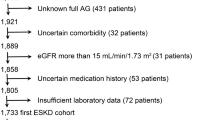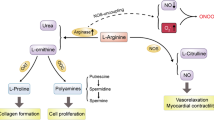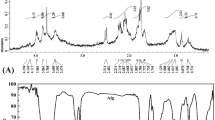Abstract
ABSTRACT: The aim of this collaborative study was to investigate whether guanidino compound analyses in the biologic fluids can be used as a complementary diagnostic parameter for hyperargininemia. Guanidino compounds were determined in the biologic fluids of all known living hyperargininemic patients using a cation exchange Chromatographie system with a fluorescence detection method. The serum arginine, homoarginine, α-keto-δ-guanidino-valeric acid, argininic acid, and N-α-acetylarginine levels of all the hyperargininemic patients are higher than the normal range. Similar increases were seen for the urinary excretion of α-keto-δ-guanidinovaleric acid and argininic acid. Untreated hyperargininemic patients have the highest guanidino compound levels in cerebrospinal fluid. However, even under therapy, the arginine, homoarginine, α-keto-δ-guanidinovaleric acid, and argininic acid levels in cerebrospinal fluid are still increased. Protein restriction alone is not sufficient to normalize the hyperargininemia, but protein restriction together with supplementation of essential amino acids with or without sodium benzoate decreases further the arginine levels. However, whereas the argininemia can be normalized, the catabolites of arginine are still increased. We conclude that the urinary amino acid levels may remain normal in hyperargininemia, whereas consistent increases of the guanidino compounds are observed. Thus, guanidino compound analyses can be used as a complementary biochemical diagnostic parameter for hyperargininemia. Although the argininemia can be normalized by therapy, the levels of the catabolites of arginine are still elevated.
Similar content being viewed by others
Log in or create a free account to read this content
Gain free access to this article, as well as selected content from this journal and more on nature.com
or
Author information
Authors and Affiliations
Rights and permissions
About this article
Cite this article
Marescau, B., De Deyn, P., Lowenthal, A. et al. Guanidino Compound Analysis as a Complementary Diagnostic Parameter for Hyperargininemia: Follow-Up of Guanidino Compound Levels during Therapy. Pediatr Res 27, 297–303 (1990). https://doi.org/10.1203/00006450-199003000-00020
Received:
Accepted:
Issue date:
DOI: https://doi.org/10.1203/00006450-199003000-00020
This article is cited by
-
Processing mechanism of guanidinoacetate in choroid plexus epithelial cells: conversion of guanidinoacetate to creatine via guanidinoacetate N-methyltransferase and monocarboxylate transporter 12-mediated creatine release into the CSF
Fluids and Barriers of the CNS (2022)
-
Anti-malarial drug artesunate restores metabolic changes in experimental allergic asthma
Metabolomics (2015)
-
Hyperargininemia due to arginase I deficiency: the original patients and their natural history, and a review of the literature
Amino Acids (2015)
-
AAV-based gene therapy prevents neuropathology and results in normal cognitive development in the hyperargininemic mouse
Gene Therapy (2013)
-
Early‐onset hyperargininaemia: A severe disorder?
Journal of Inherited Metabolic Disease (2009)



